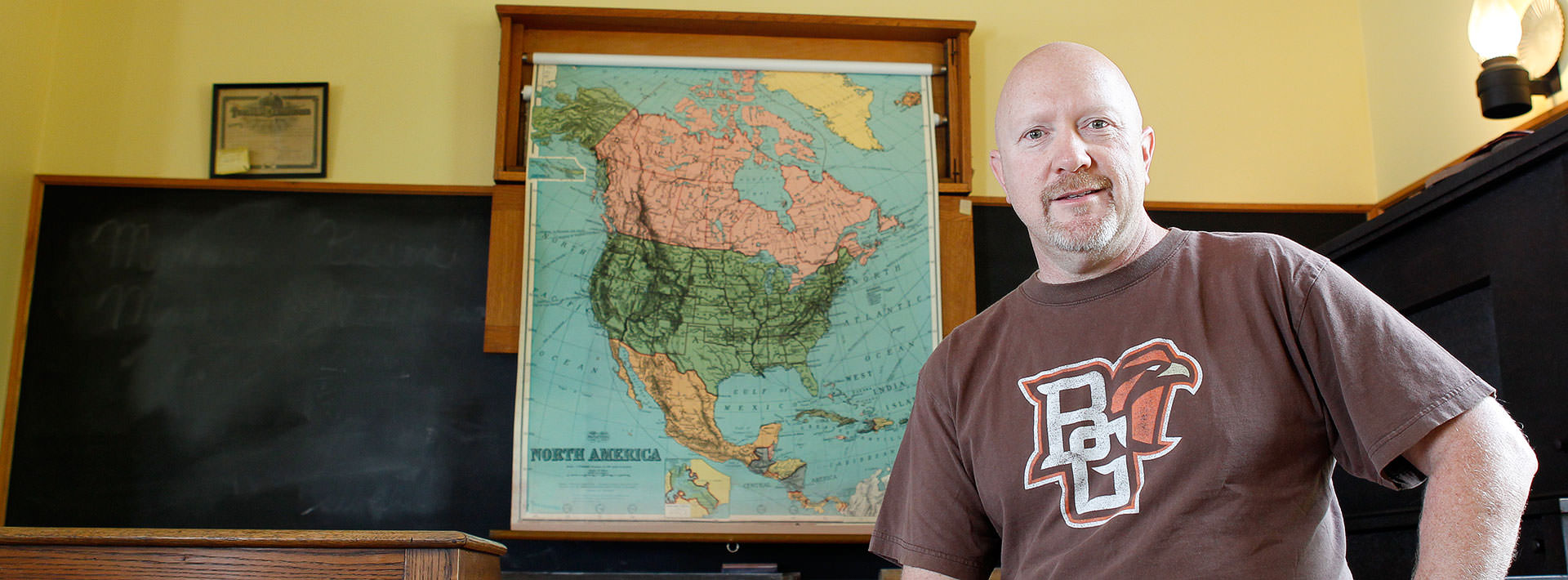Teaching and learning in Alaska
BGSU alumnus faces challenges in new career

By Marie Dunn-Harris
When you think of Alaska, a beautiful landscape with an abundance of wildlife and forests comes to mind. But there’s a small part of the state that is completely different and challenging in many ways. That’s where BGSU alumnus Doug Avery, ’96 is beginning his new career in school administration.
Avery was an education major who worked as a teacher in the Columbus school district for 15 years. He had aspirations of becoming a principal but couldn’t find a position in the lower 48 without having administrative experience.
“It was very difficult. There were 300 applicants for every job I applied for,” he said. “I actually gave up for a while but then started thinking outside the box.”
Avery did his research online and worked with Alaska Teacher Placement, an education job clearinghouse for Alaska. School district representatives attend job fairs across the country, including Bowling Green, to recruit teachers and administrators. The state of Alaska is known for developing strong administrators, since the inventory is low.
“Going into administration enabled me to reach more kids and help them achieve their goals,” Avery said. “I’ve always been a risk taker and so I don’t mind doing things like moving to Alaska to get the experience I need.”
Avery is an assistant principal in the village of Kipnuk, where roughly 220 students are enrolled at the K-12 school. He works in an economically depressed area of the state, located on a Native American reservation with a population of about 1,000.
“It’s flat, muddy, little foliage, it’s not what you envision Alaska to be,” he said. “There are no paved roads there; everyone drives an ATV or snowmobile.”
Living on a reservation does have its drawbacks. Avery and his wife must travel to Anchorage to stock up on supplies from the grocery store. Then, they have to pack and ship those supplies to their home. Of course, there are certain items like fresh or frozen food that they cannot ship. They instead pack a cooler when traveling or simply have to make those purchases at the smaller grocery stores in their village, which is costly.
“It starts getting expensive when you leave Anchorage,” he said. “For example, a bag of Doritos at the small grocery store in our village is $20. But you find yourself paying those high prices when you run out of things like milk or eggs.”
That’s why having a separate freezer is essential.
“You can’t just have a normal refrigerator or freezer in your apartment because you have to buy so many supplies to get you through the year,” he said. “Traveling is difficult and sometimes impossible when winter sets in.”
Avery also had to adjust to the unusual extremes of extended daylight or darkness, depending on the season.
“When I left at the end of May, the sun was shining at eleven-thirty at night. And in the winter it’s the opposite. It’s dark most of the day,” he said.
Besides having a different way of life, Avery has responsibilities as an assistant principal that aren’t like anything in Ohio.
“For example, one of my students was suicidal and I had to fly with him to Anchorage where he could receive the help he needed. And that was at 11 o’clock at night. It’s just completely different,” he said. “Administrators also have to make sure there’s enough fuel oil, which is how we heat the teacher housing. If we run out, we freeze.”
Avery and his wife spend the entire school year in Alaska, but come home to Bowling Green for two months during summer break. He expects to spend a few more years working in school administration in Alaska and hopes to eventually pursue his Ph.D. at BGSU.
“Working in Alaska is an experience that has enriched my life in many ways. The Native Americans there are unique and genuine and have introduced me to an entirely different culture within our country,” Avery said.
Updated: 12/02/2017 12:52AM
